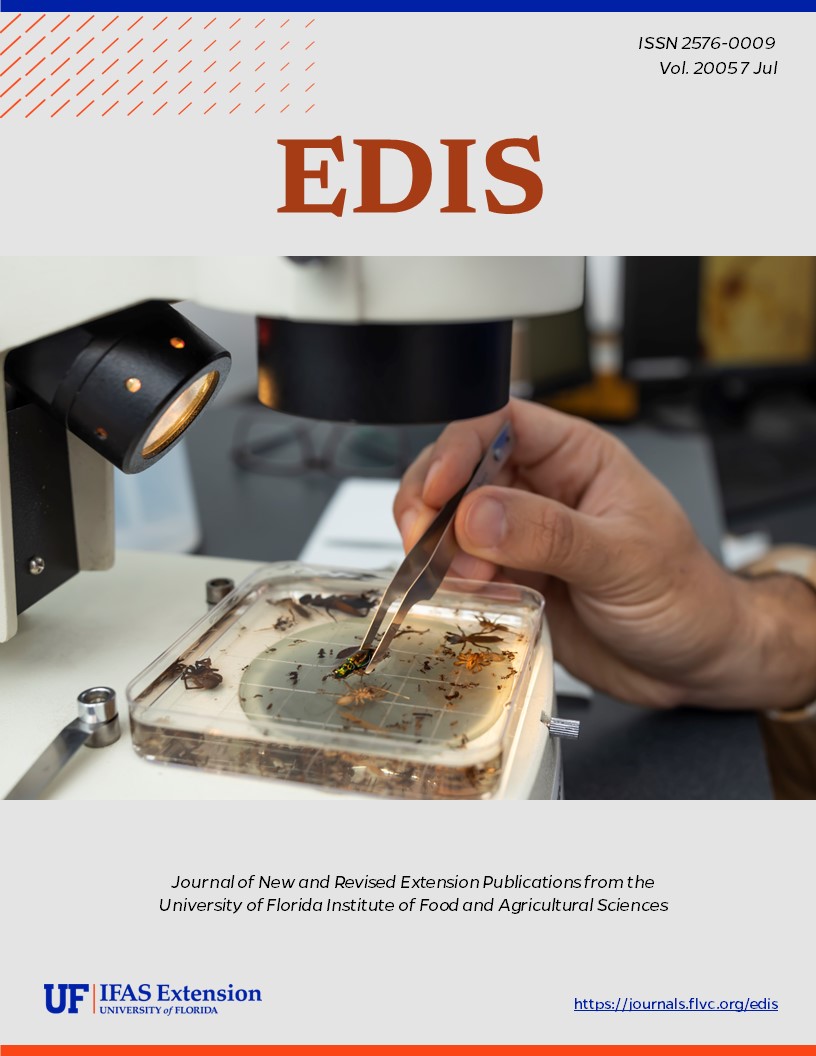Abstract
Stink bugs (Pentatomidae) and leaffooted bugs (Coreidae) are important direct pests of many seed, fruit, vegetable and nut crops. Recently they have become serious pests of cotton because of the reduction in pesticide use resulting from the eradication of the boll weevil and the implementation of genetically-modified cotton. This document is ENY-718, one of a series of Entomology and Nematology Department, Florida Cooperative Extension Services, Institute of Food and Agricultural Sciences, University of Florida. Publication Date: April 2005.
References
Aldrich, J., M. Hoffman, J. Kochansky, W. Lusby, J. Eger and J. Payne. 1991. Identification and attractiveness of a major component for Nearctic Euschistus spp. stink bugs (Heteroptera: Pentatomidae). Environ. Entomol. 20: 477-483. https://doi.org/10.1093/ee/20.2.477
Mizell, R. F. & W. L. Tedders. 1995. Use of the modified Tedders trap to monitor stink bugs in pecan. Proc. Southeast. Pecan Growers Assoc. 88: 36-40.
Dutcher, J. D. and J. W. Todd. 1983. Hemipteran kernel damage of pecan. In Payne, J. A. (ed.). Pecan Pest Management - Are We There? MPEAAL 13:1-140. pp. 1-11.
McPherson, J. and R. McPherson, 2000 Stink bugs of economic importance in America north of Mexico. CRC Press Boca Raton, FL. 253 pp. https://doi.org/10.1201/9781420042429

